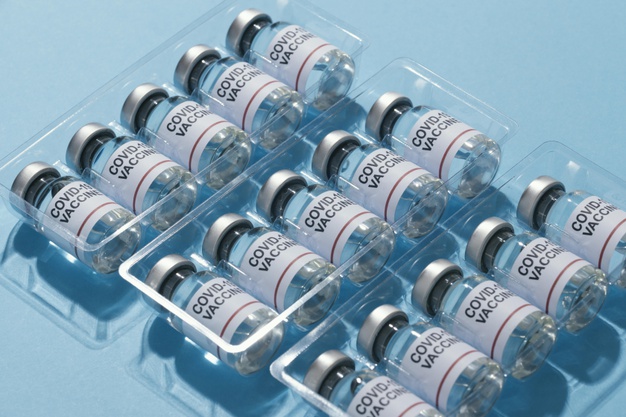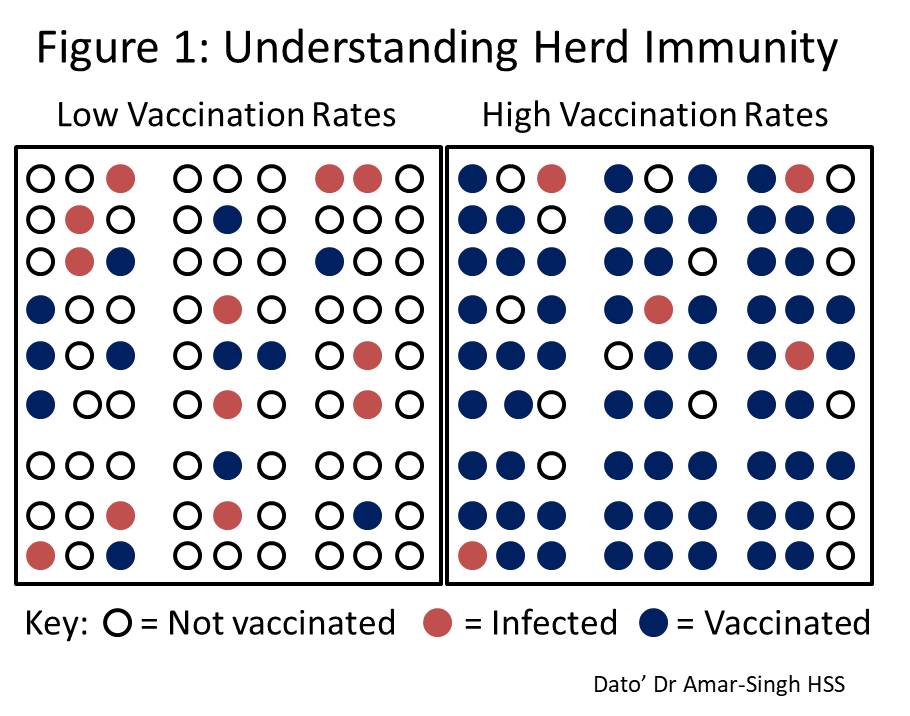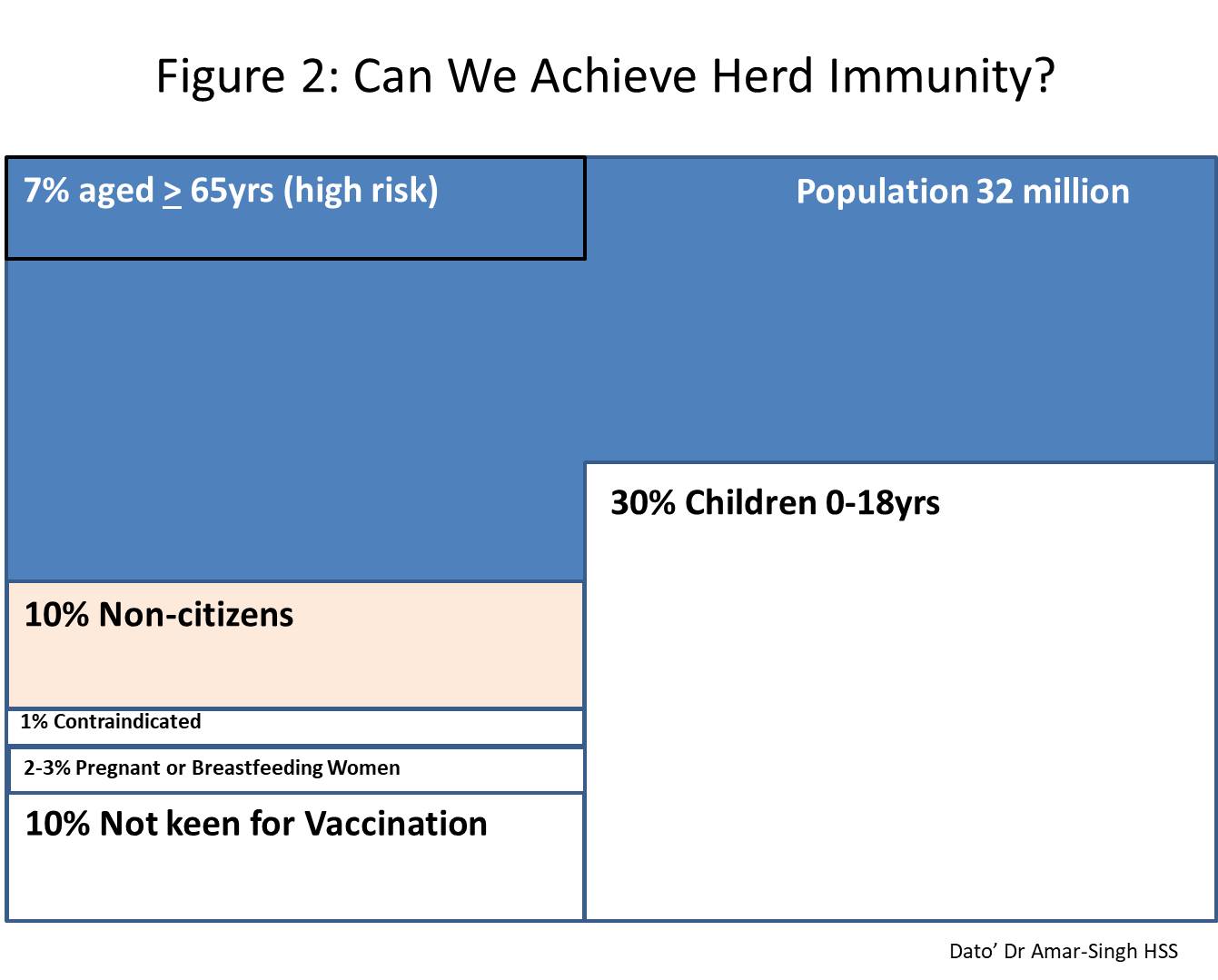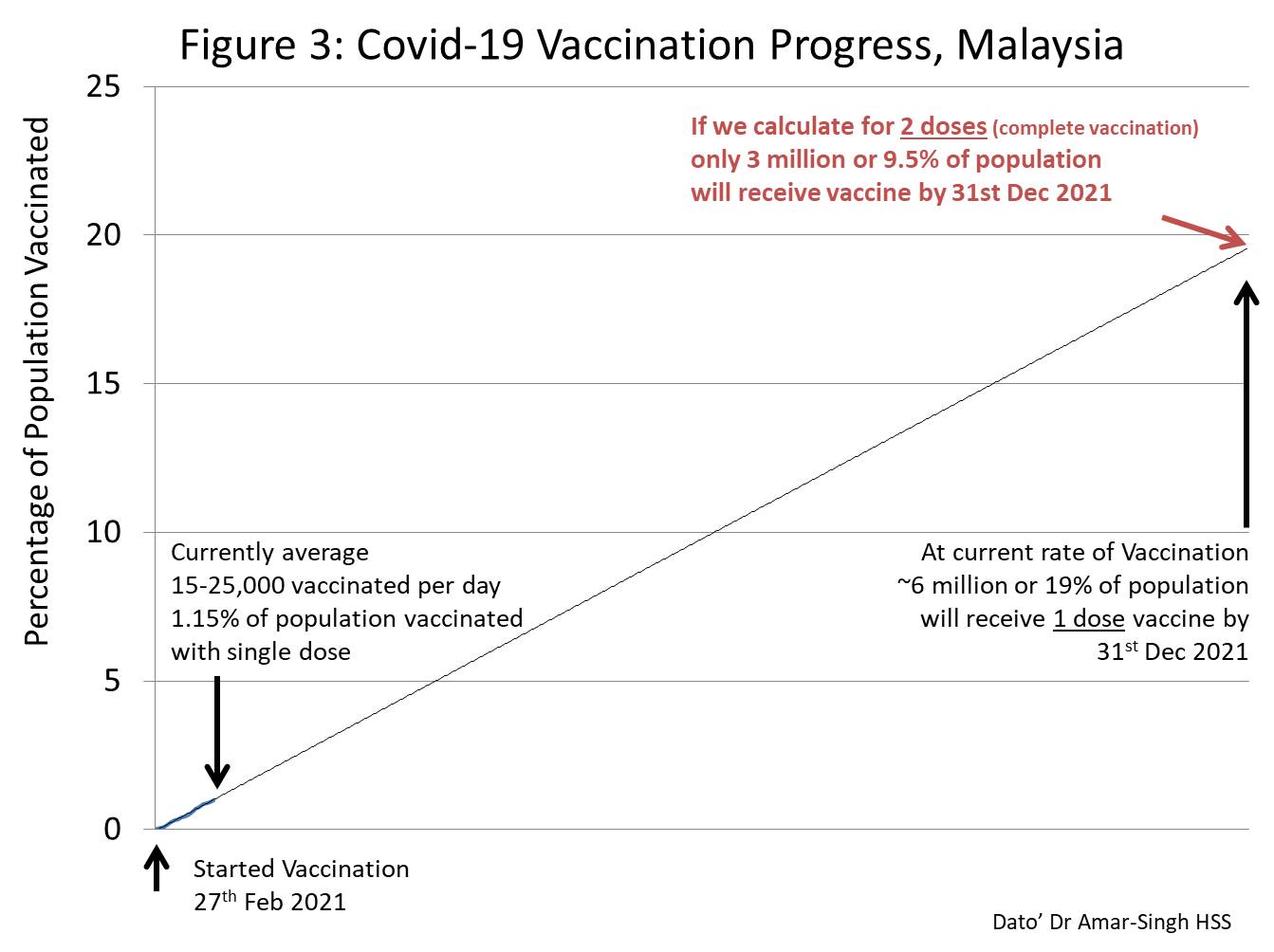

By Dato’ Dr Amar-Singh HSS, Consultant Paediatrician
COVID-19 vaccination has become the focus of many in the nation and internationally. We look to it as one of the mechanisms by which we can return to more social and community interaction. With vaccination, we will still have to maintain our masks and limit numbers but we will be able to move about more freely and life can return to a closer semblance of ‘normality’. However, for this to happen we will require vaccination to give us herd immunity.
What is Herd Immunity?
Herd immunity is where a sufficient proportion of the population has achieved immunity against COVID-19 through vaccination and this significantly reduces the spread of the disease and also protects those that cannot be vaccinated (contraindicated). See Figure 1 that illustrates this. We are aware that the vaccines are effective at reducing hospital admission and clinical infection but the data is still uncertain as to how good they are at preventing transmission. Overall it would result in a huge reduction in symptomatic cases, long term morbidity (‘Long COVID’) and deaths.


To achieve herd immunity against COVID-19, a substantial proportion of a population would need to be vaccinated but we are currently uncertain as to what this percentage is. In some diseases like measles, 90-95% of a population need to be vaccinated to achieve herd immunity; in others like polio we require about 80%. It is very likely that for COVID-19 we will require at least 75-85% of the population to be vaccinated. This can be supplemented by those who had prior infection with COVID-19.
How Can We Achieve Herd Immunity?
Figure 2 roughly illustrates the population of the country by proportion to try and answer the question on how we can achieve herd immunity. Approximately 30% of our population of 32 million are below 18 years of age and currently not indicated for vaccination as the data for children is still not available. At any one time we will have 2-3% of women who are pregnant or breast feeding and vaccination for this group will generally be deferred until later (unless they are in a high risk situation). At least 1% of the population will be too ill, in hospitals or have a contraindication to vaccination. I have assumed that a modest 10% will choose not to vaccinate. This will leave us with the ability to vaccinate only ~55-60% of the population; this is also assuming we are sensitive to our economic migrant and refugee populations that account for at least 10% of the population.


Hence it can be seen that we will not be able to reach sufficient rates of COVID-19 vaccination in the population to reach herd immunity. Many countries realise this and studies are now being conducted on COVID-19 vaccination in children to see if we can increase the proportion of those vaccinated by involving children. It is quite likely that we will end up vaccinating children down to 12 years of age. We must remember that even if 60% of the population is vaccinated, when children go to school or kindergarten there is no herd immunity present in that environment (as all the children are not vaccinated). Herd immunity for children will currently only work when they are with many vaccinated adults.
Are We on Target to Achieve Herd Immunity?
As of 17th March 2021, 367,213 Malaysians or 1.15% of the population have been vaccinated with one dose of a COVID-19 vaccine. In addition 5,867,497 have registered to receive the vaccine, i.e. ~30% of those eligible. Only 15.8% of people > 60 years of age and those with comorbidities have signed up (target population for these groups is 9.4 million, but registered 1.49 million). Both vaccinations and registrations are too slow. Figure 3 shows our vaccination rate at present extrapolated to the end of the year. At the current rate of vaccination, only approximately 6 million or 19% of the whole population will receive 1 dose vaccine by the end of the year, not to mention the need for a second dose.


We expect that the Ministry of Health, in partnership with the private sector, will ramp up vaccinations for Phase 2 that starts in April 2021. The vaccination rate depends on vaccine supply, logistics and the capacity of the health system to deliver them.
In this pandemic that affects every single person, we need to take personal responsibility. We cannot expect others to help control the outbreak for us. We are in this together and our collective vaccination is part of the way forward.


